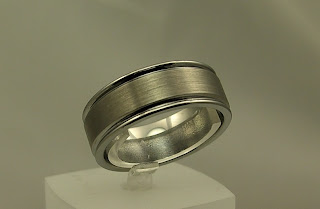A steel-gray metal under standard conditions when uncombined, tungsten is found naturally on Earth only in chemical compounds. It was identified as a new element in 1781, and first isolated as a metal in 1783. Its important ores include wolframite and scheelite. The free element is remarkable for its robustness, especially the fact that it has the highest melting point of all the non-alloyed metals and the second highest of all the elements after carbon. Also remarkable is its high density of 19.3 times that of water, comparable to that of uranium and gold, and significantly higher (about 1.7 times) than that of lead. Tungsten with minor amounts of impurities is often brittle and hard, making it difficult to work. However, very pure tungsten is more ductile, and can be cut with a hacksaw.
Because it retains its strength at high temperatures and has a high melting point, elemental tungsten is used in many high-temperature applications, such as light bulb, cathode-ray tube, and vacuum tube filaments, heating elements, and rocket engine nozzles. Its high melting point also makes tungsten suitable for aerospace and high-temperature uses such as electrical, heating, and welding applications, notably in the gas tungsten arc welding process (also called tungsten inert gas (TIG) welding).




















No comments:
Post a Comment